What is tsukemen?
Tsukemen is a type of noodle dish eaten by dipping the noodles in sauce.
It is a noodle dish invented in Japan and is considered to be a type of ramen.
Once you try the noodles in the thick soup, you will become immediately addicted to the taste.
Tsukemen is a different way of eating ramen, and can also be enjoyed as a finishing dish (shime).
The soup (dipping sauce) is often adjusted to be thicker than that of regular ramen.
Tsukemen comes in a wide variety, including those with sour, sweet, or fish powder flavors.
The toppings vary in style from restaurant to restaurant and is placed on either a bowl of soup, a bowl of noodles, or both.
The ingredients are basically the same as for ramen.
The noodles are sometimes topped with ingredients, such as nori seaweed, chashu pork, bamboo shoots, boiled eggs.
Additionally, tsukemen may also be served with condiments, such as wasabi (Japanese horseradish) and yuzu (citrus fruit).
While ramen noodles are boiled and placed directly into the hot soup, the tsukemen noodles are boiled and cooled in cold water before being served in a separate bowl.
This cooling-down process is the most important part in making tsukemen.
There are different theories about the origin of tsukemen.
The most commonly accepted theory is that it was invented in the 1950s at a particular restaurant in Tokyo.
The tsukemen boom occurred in the 1970s, and the dish began to be called by various different names, such as tsukemen, morisoba, and tsuke soba.
From the mid 1990s to the 2000s, noko-gyokai-tonkotsu (thick seafood and pork bone) tsukemen became popular.
Now it is diversifying to include ethnic curry flavor, tomato flavor, and Italian flavor using dairy products.
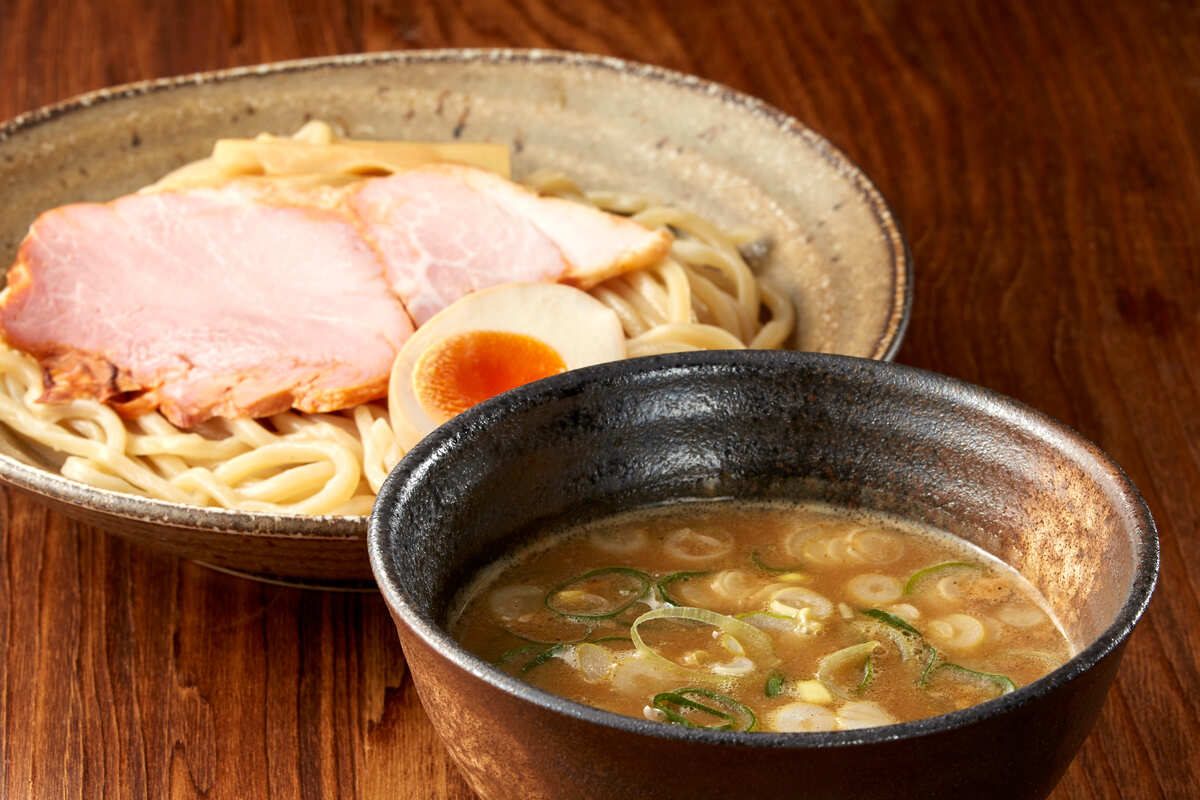
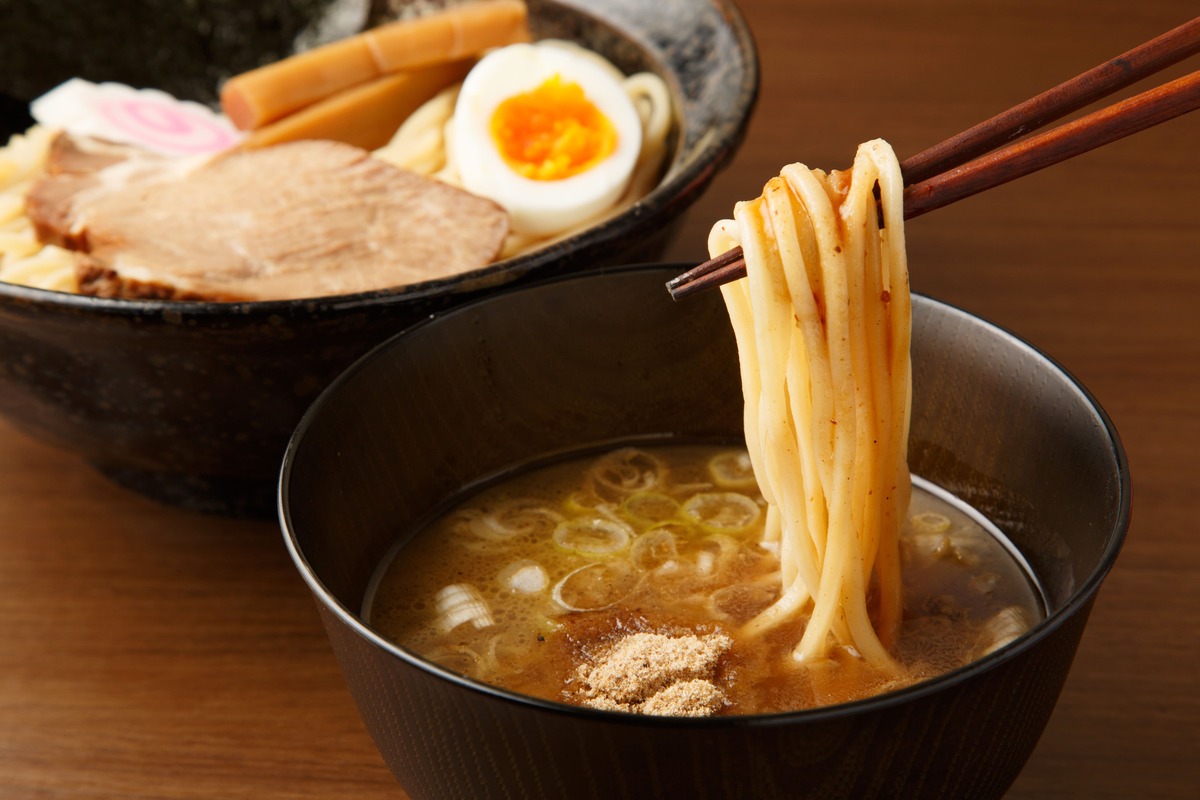
Which Should You Choose: Tsukemen or Ramen?
“Tsukemen and ramen look pretty similar—what’s the actual difference?”
This is a common question among visitors to Japan. Especially for first-time travelers, it’s easy to feel unsure about which one to order.
Ramen is a hot bowl of noodles served in soup. The noodles and soup are combined, letting you enjoy their flavors and warmth together.
Tsukemen, on the other hand, comes with the noodles and soup served separately. The noodles are chilled after boiling, and you dip them into a hot, rich broth before eating. This method brings out the chewy texture of the noodles and the aroma of the wheat.
To put it simply:
- Want something rich and filling? → Go for tsukemen
- Want to savor the soup more deeply? → Choose ramen
- Hot summer day? → Tsukemen is refreshing
- Cold winter day? → Ramen is comforting
Trying both during your trip is definitely a fun idea, but if you're looking to experience a unique Japanese food culture, tsukemen is worth a try!
Local Rules and Terminology of Tsukemen
When visiting a tsukemen shop, you might find unfamiliar Japanese words on the menu or ticket machine. It can feel a bit overwhelming at first, but don't worry—just remembering a few key terms will help you enjoy Japan’s tsukemen culture even more.
First, you’ll often see the word “Tokusei”, which refers to a deluxe version of the dish. It comes topped with everything—chashu pork, soft-boiled egg, nori seaweed, bamboo shoots, and more. If you’re unsure what to get, choosing Tokusei is always a good option.
Next is “Niboshi-kei”, meaning the broth is based on dried baby sardines (niboshi). These give the soup a strong seafood aroma and rich umami flavor. If you enjoy fish-based broths, this is a great pick—but if you’re sensitive to fishy smells, be cautious.
You might also encounter the word “Atsumori”. Typically, tsukemen noodles are cooled in water after boiling. But with Atsumori, the noodles are served warm. It's ideal for cold days or for those who prefer not to eat cold noodles.
At most shops, you can also choose your noodle portion: nami (regular), chuu (medium), or dai (large). Many places offer these options at no extra cost, so feel free to choose based on your hunger level.
One more important term to remember is “soup-wari”. Tsukemen broth is intentionally made very thick and rich to pair with the noodles. But after finishing the noodles, drinking the soup as-is might be too salty or intense. That’s where soup-wari comes in—hot water or seafood broth is added to dilute the remaining soup and make it drinkable.
The method varies by restaurant. Some staff will bring the hot broth upon request, while other shops provide a pot at the table for self-service. Just ask, “Can I have soup-wari?”, and most restaurants will be happy to assist.
By understanding these words and customs, you’ll be able to order tsukemen more smoothly and enjoy Japan’s culinary culture on a deeper level. And if anything is unclear, don’t hesitate to ask the staff—Japanese restaurant staff are usually very kind and helpful!
Varieties of tsukemen
Some common types of tsukemen are explained below.
Noko-gyokai-tonkotsu tsukemen (thick seafood and pork bone-based tsukemen)
It features a thick, rich broth with a pork bones and seafood base.
The noodles are thick and well blended with the soup.
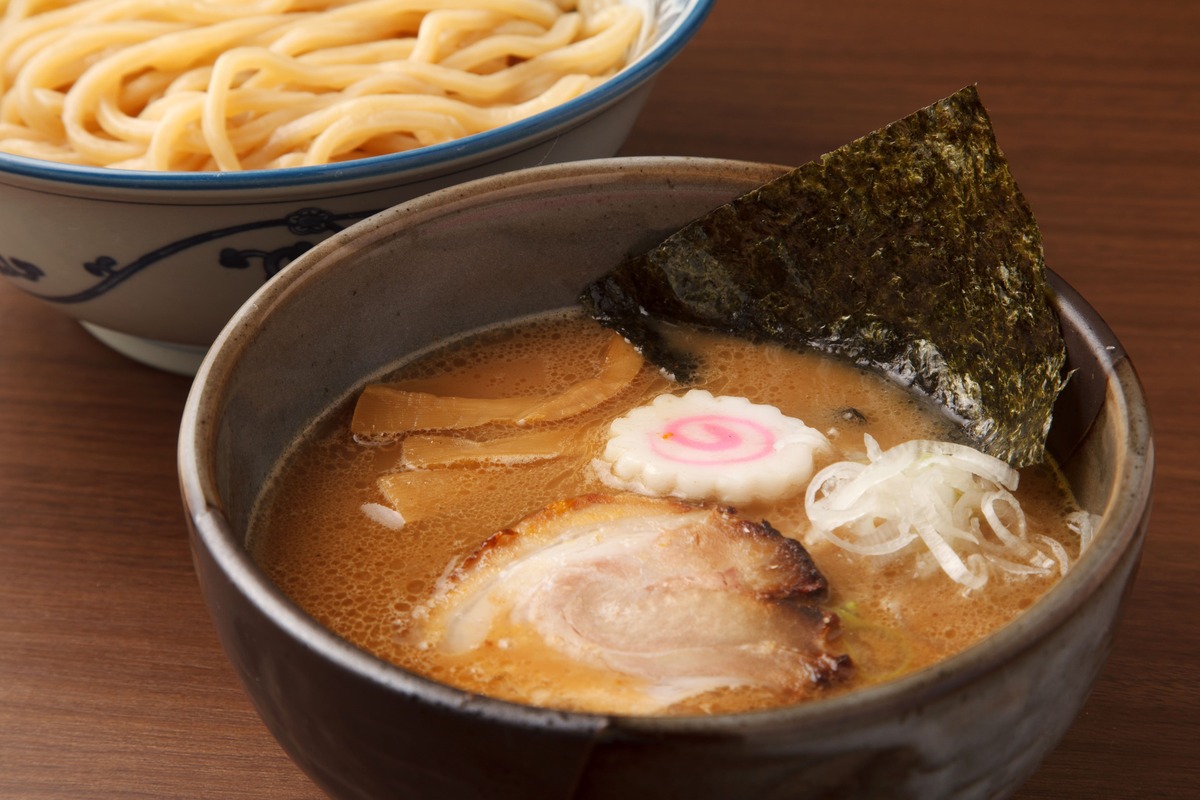
Miso-based tsukemen (fermented soy bean tsukemen)
The soup is made with miso paste and is characterized by its rich flavor.
It is often sold as a limited menu in winter.
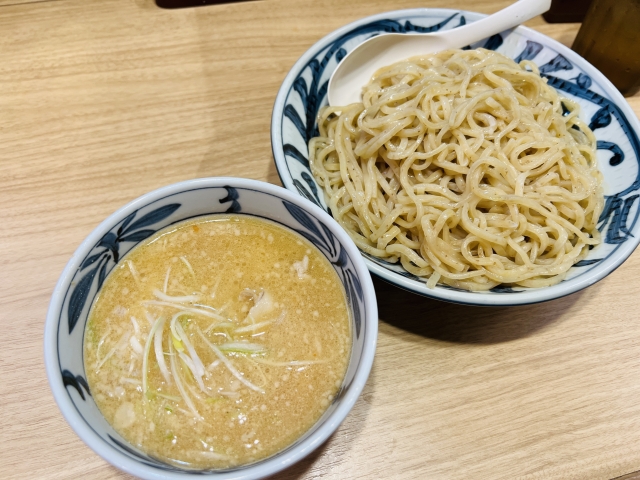
Shio-based tsukemen (salt tsukemen)
The salt-based soup has a clean and refreshing taste.
It is light and accepted by people of all ages.
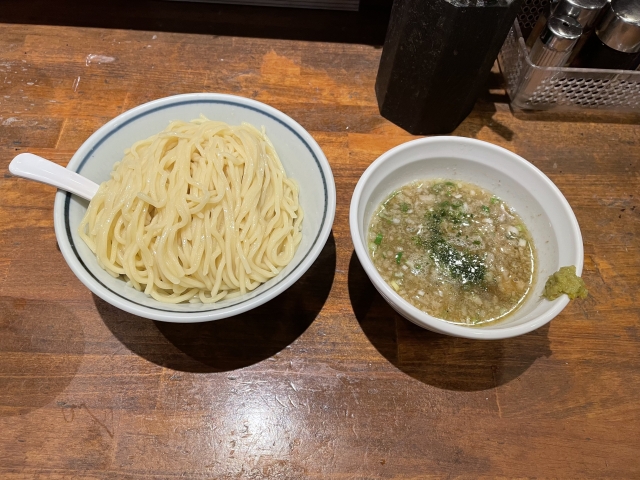
Curry tsukemen
The curry-flavored broth provides a spicy taste.
The noodles are thicker and blends well with the soup.
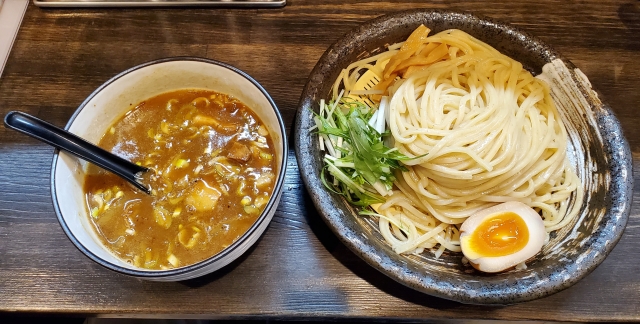
Kombusui tsukemen (kombu kelp-based tsukemen)
The noodles are served in kombu kelp water, a broth extracted from kombu kelp soaked in water.
It is eaten in the same way as regular tsukemen, by dipping them in the sauce.
You can also enjoy the tsukemen plainly, without dipping the noodles in the sauce.
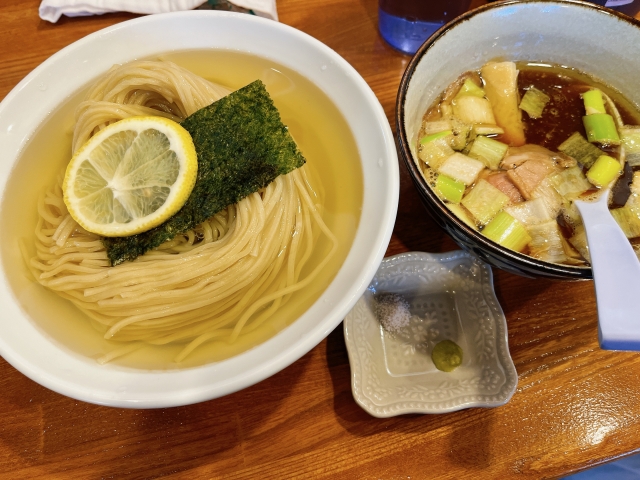
How to make tsukemen
The general way of making tsukemen is explained below.
Tsukemen making is based on expert techniques and a unique recipe.
For the soup, the first step is to make the broth.
Tsukemen soup comes in a variety of bases, including thick seafood and pork bone, soy sauce, miso, and salt.
Extracts are obtained from pork and chicken bones by simmering the soup for a long time, and additional flavors are added with seafoods.
Spices, vegetables, and seasonings are also added to give each restaurant its own unique flavor.
Noodle dough is made from flour, water, salt, and brine.
The dough is repeatedly kneaded, stretched, and cut into the desired thickness.
The noodles are boiled and then cooled in cold water to give them a smooth texture.
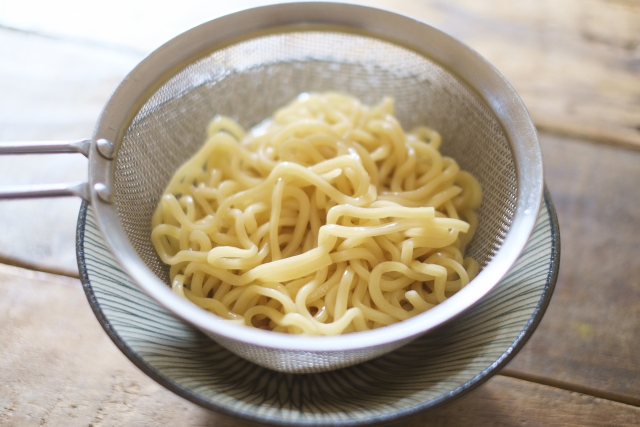
Prepare the toppings.
Toppings such as chashu pork, green onions, bamboo shoots, boiled eggs, and nori seaweed are also prepared in unique ways at each restaurant.
Finally, serve the dish.
The noodles are served in proper portions and the soup is placed in a separate bowl.
Toppings can be served on top of the noodles or in the soup.
How to eat tsukemen
Buy meal ticket
As with ramen restaurants, when you enter a tsukemen restaurant, you will usually find a ticket vending machine located near the entrance.
Select a menu item from the ticket machine and purchase a meal ticket.
You can also buy toppings and sides.
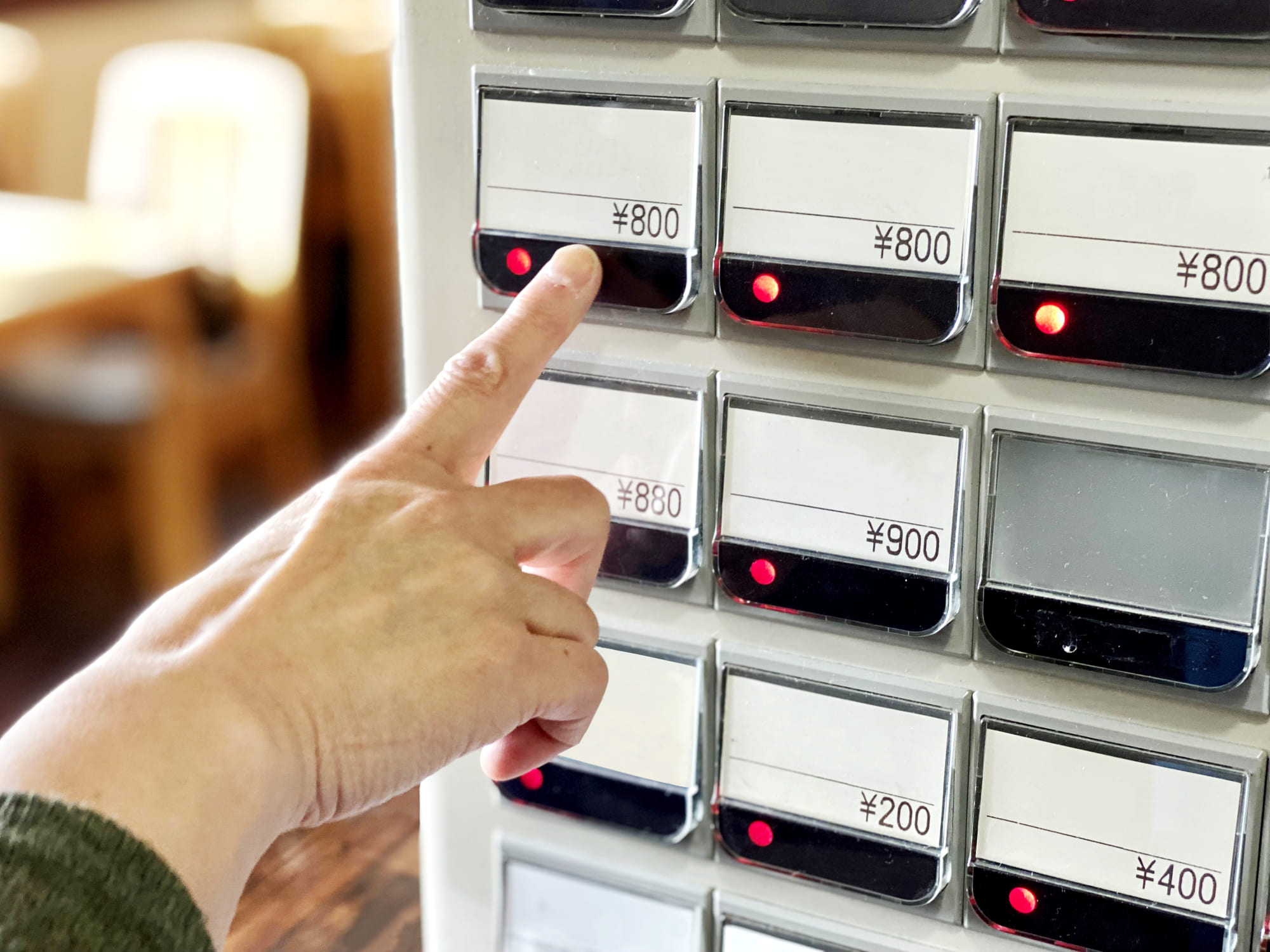
Hand meal ticket to staff
Once you are seated, give the meal ticket to the staff.
At this time, many customers let them know how hard they like the noodles and how thick they like the soup.
Wait
Wait for your ordered tsukemen to be served.
If the restaurant has a self-service water station, you can grab a drink at this time.
Eat
When your ordered tsukemen is served, dip the noodles into the soup and eat.
Depending on the thickness of the soup, a light dip may be sufficient.
Also dip the toppings, such as chashu pork, into the soup to eat.
Because the tsukemen soup is very thick, you can dilute the remaining soup afterwards for drinking.
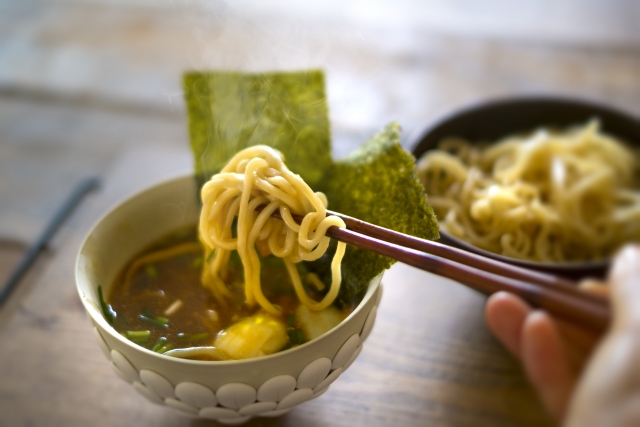
Drink soup
The remaining soup can be enjoyed by adding a small amount of hot water or broth.
Enjoy different flavors by changing the thickness of the soup.
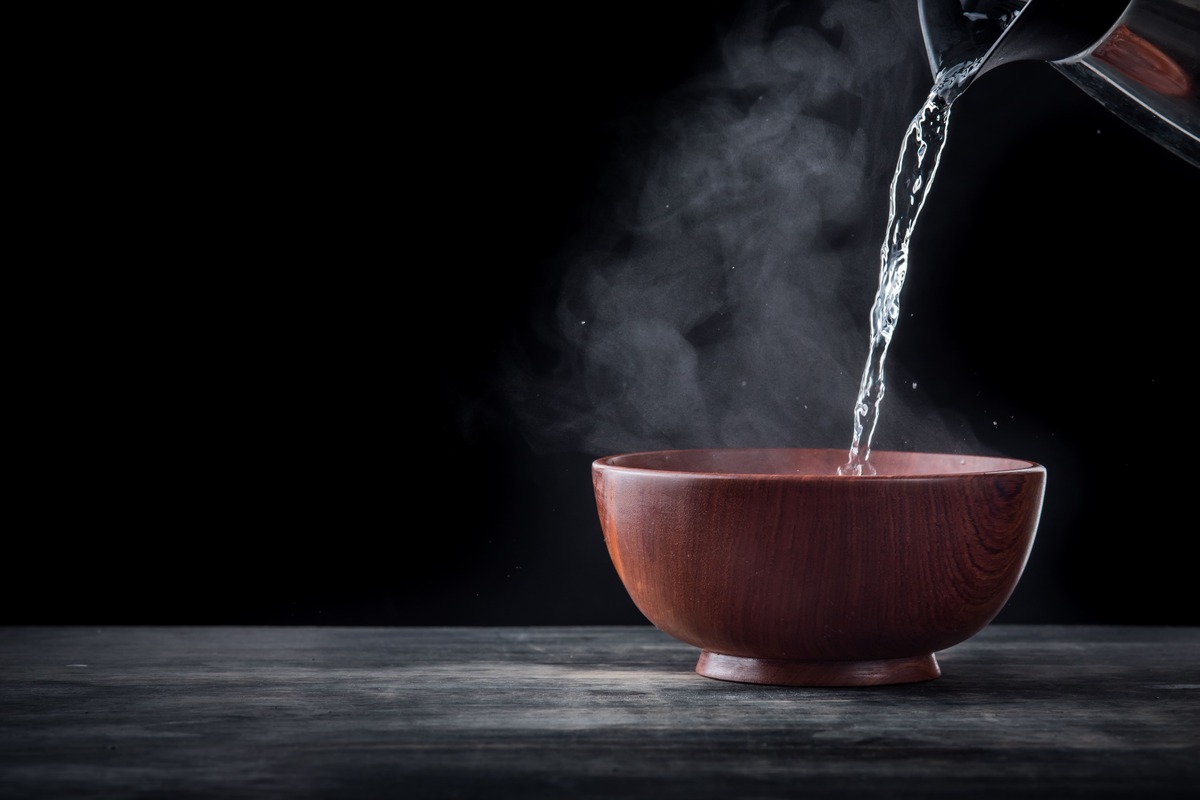
Tidy up
Dispose of tissues and other papers used to clean up around your mouth in the shop's trash can.
People’s reaction when eating
Search Restaurants by Destination

Search Restaurants by Popular Cuisines





